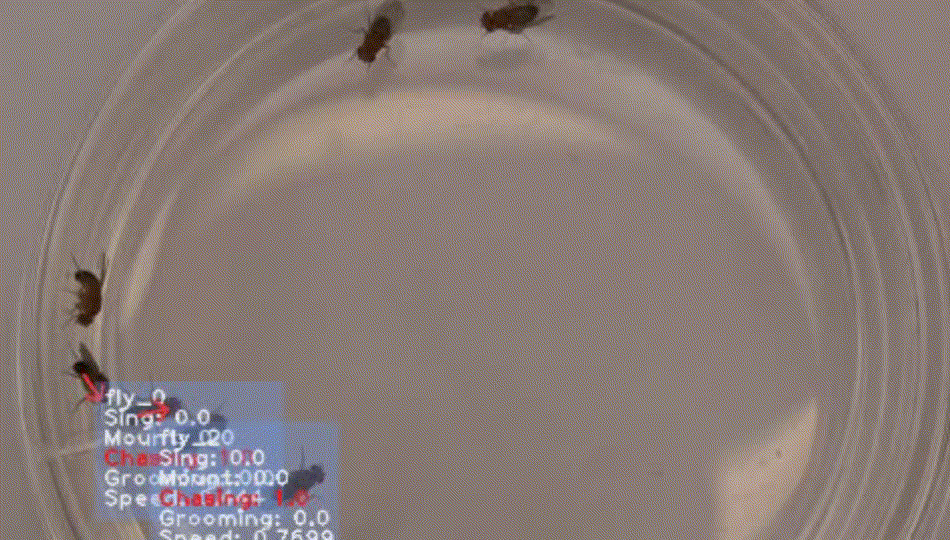
The MAFDA system can track individual flies within a larger group, identify behaviors, and compare those behaviors with fruit flies' genotypes. Image Credit: Tulane University
Known as MAFDA (for Novel Machine-learning-based Automatic Fly-behavioral Detection and Annotation), the system employs cameras and a recently developed software to monitor and find complicated interactive behaviors of each fly in a larger group. This allows scientists to compare and contrast the fruit flies’ behaviors with varied genetic backgrounds.
For over a century, researchers have utilized the short lifespan and simple genome of fruit flies to decode mysteries of immunity and inheritance in humans with studies of Drosophila melanogaster, as fruit flies are scientifically called, culminating in six Nobel Prizes. Around 60% of the same DNA is shared by fruit flies and humans.
Earlier algorithms were less precise at monitoring individual flies in a group, but the MAFDA system makes it easier to study the tiny, winged insects.
Fruit flies are like pioneers in the discovery of new things, from innate immunity to the chromosome theory of inheritance. To be able to quantify the flies’ behavior is really a step forward in behavior studies.
Wu-Min Deng, Ph.D., Study Corresponding Author and Professor, Biochemistry and Molecular Biology, Tulane University
Involved with Cancer Research at Tulane School of Medicine, Wu-Min Deng is also a Gerald & Flora Jo Mansfield Piltz's Endowed Professor.
Wenkan Liu, a School of Medicine graduate student who developed the MAFDA system, stated that the importance of the platform is “undeniable.”
It speeds up research, minimizes human error, and provides intricate insights into behavior genetics. This tool is potentially pivotal as it enhances reproducibility and paves the way for new explorations in large-scale behavioral analysis.
Wenkan Liu, Graduate Student, School of Medicine, Tulane University
The study found that the gene that makes flies detect pheromones, which are chemical substances created by other fruit flies that are essential for attraction and other processes, is the same gene that regulates pheromone generation in the first place.
These results were published in Science Advances. They challenge the common view that individual genes regulate pheromone generation and perception. The results have wide applications in the areas of human behavioral evolution, metabolism, and sex dimorphism.
In the future, scientists believe to see MAFDA employed in a wide range of applications. Jie Sun, study lead author and postdoctoral fellow at Tulane School of Medicine, stated MAFDA could ultimately be utilized to learn more about other insects as well as fish and mice, and the system may be beneficial in studying drug effects in humans.
“The more information we give the machine, the better it gets at correctly identifying different behaviors from courtship to feeding and so on,” Sun added. “This is a very important, meaningful tool.”
Already, MAFDA has applications in other study works at Tulane, and scientists are working to package the system so it can be employed by more researchers both at Tulane and across the globe.
That’s the goal. The original idea was to be able to identify the health status of flies. That may be too much to ask right now, but we’re hoping this will be more broadly used by the community and hopefully in the future we can go in that direction.
Wu-Min Deng, Ph.D., Study Corresponding Author and Professor, Biochemistry and Molecular Biology, Tulane University
Journal Reference
Sun, J., et al. (2023) Integrating lipid metabolism, pheromone production and perception by Fruitless and Hepatocyte Nuclear Factor 4. Science Advances. doi.org/10.1126/sciadv.adf6254.